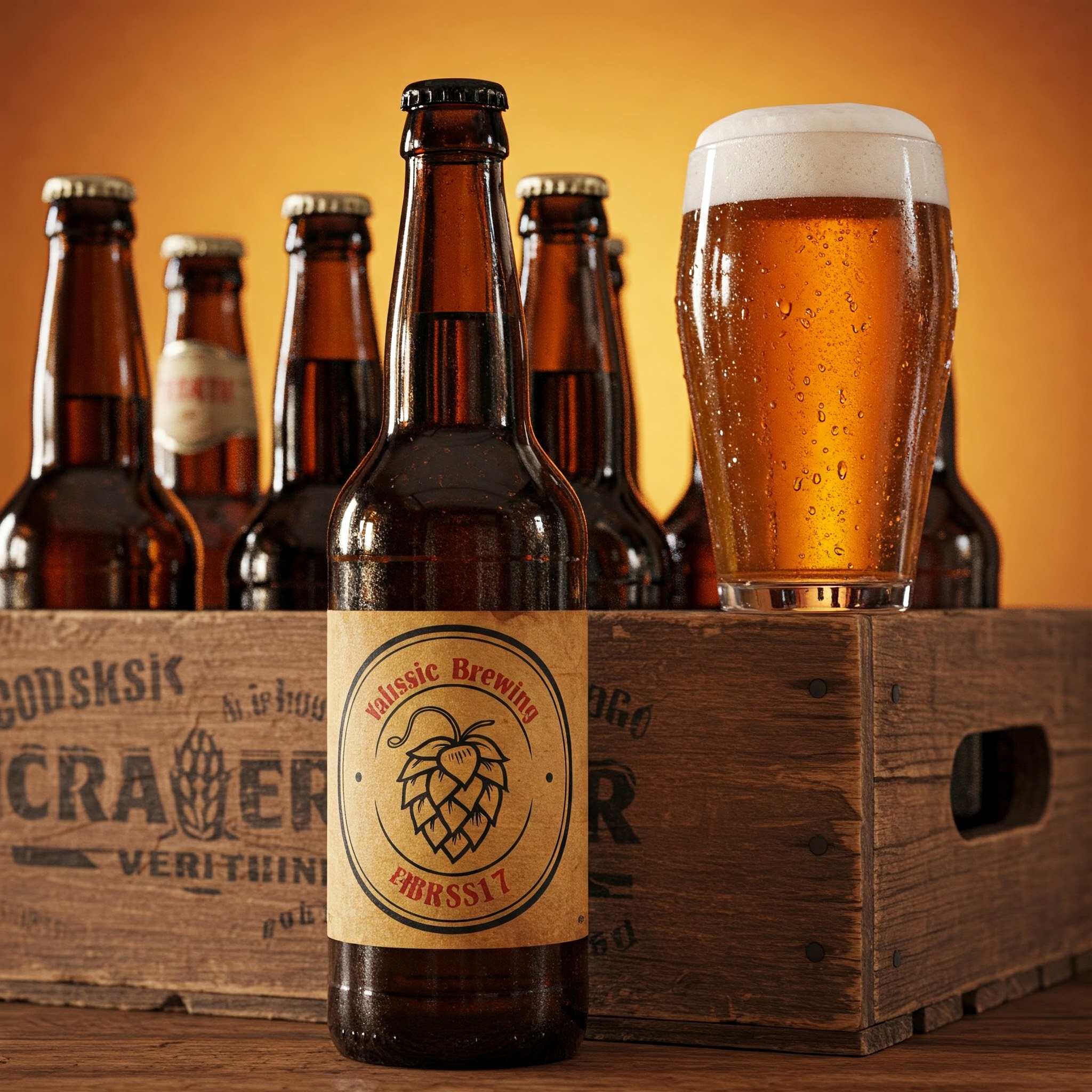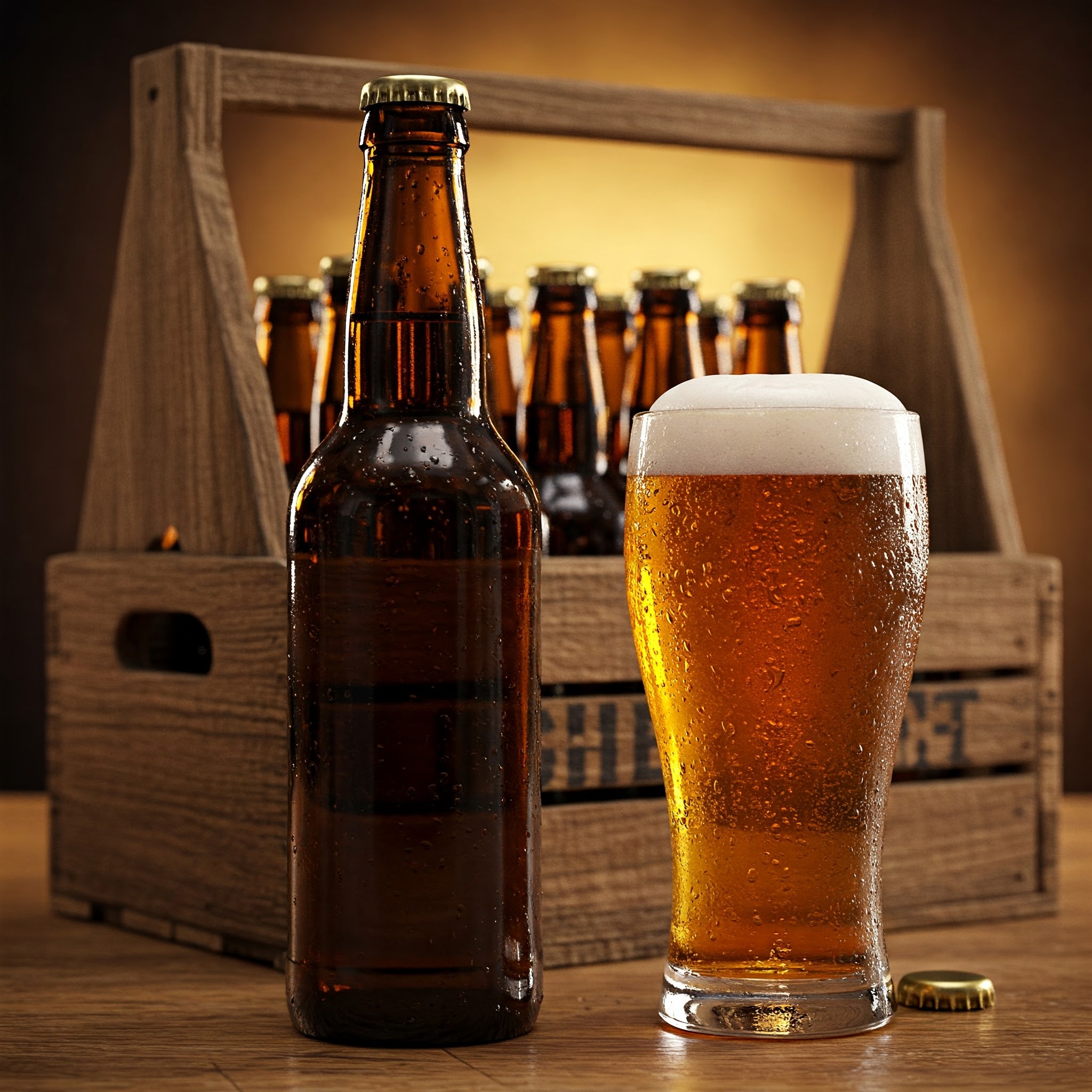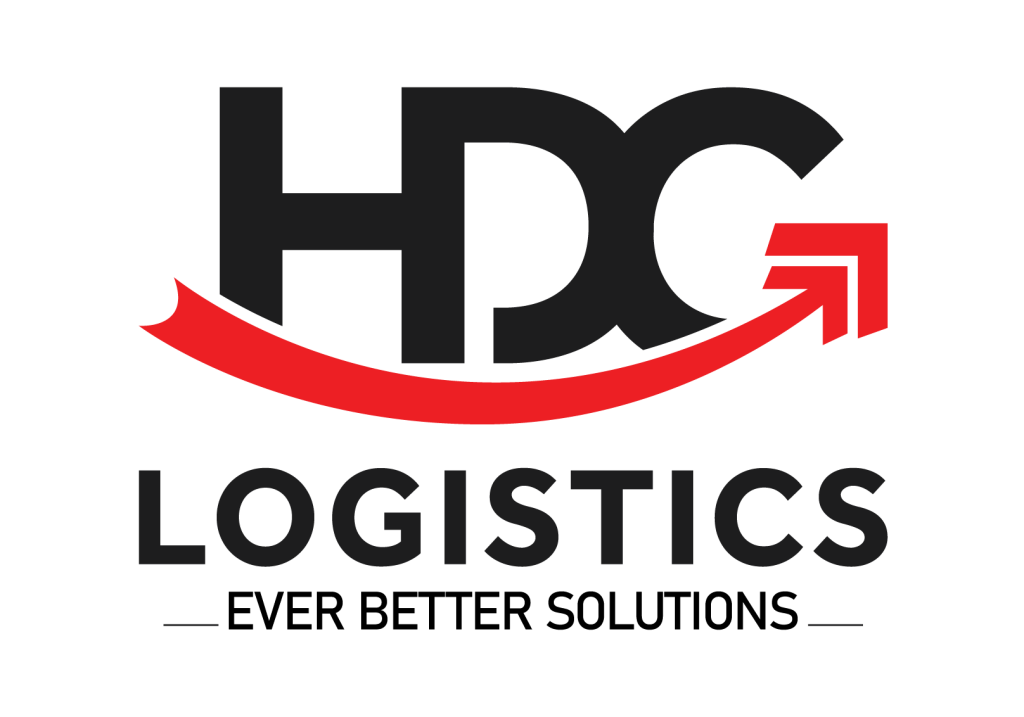Beer is a very popular beverage in Vietnam. Each year, Vietnamese people consume about 4.5 billion liters of beer, and beer imported from countries such as Germany, Belgium, and Japan accounts for a large part. Many businesses import beer to meet the diverse needs of customers, from dark beer, ale to non-alcoholic beer. However, the procedure for importing beer is not simple. Businesses need to understand customs laws and the steps they need to take to bring goods to Vietnam smoothly.

Basic regulations to know
The Vietnamese government allows the import of beer, but beer belongs to the group of goods strictly managed by the Ministry of Industry and Trade. According to Decision 4755/QD-BCT (21/12/2017), enterprises must:
- Food safety checks before beer is cleared.
- Make a declaration of conformity if the beer has technical regulations, or declare food safety if there are no regulations.
- Labeling in accordance with regulations for sale in Vietnam.
If you’re just starting out in importing beer, these regulations can be a bit confusing. HDG Logistics will help you complete the beer import procedure quickly and in accordance with the law.
Beer import HS code
2.1. What is the HS code of beer?
HS code is a code used to classify goods when imported. For beer, the HS code belongs to Chapter 22 (Beverages, wine and vinegar). Here are the common HS codes for beer:
| 0 | 2203 | Malt Beer | ||||
| 1 | – Black beer or brown beer: | |||||
| 2 | 22030011 | – – Have an alcohol content of not more than 5.8% by volume (SEN) | liters/kg | 52.5 | 35 | 8 |
| 2 | 22030019 | – – Other ( SEN) | liters/kg | 52.5 | 35 | 8 |
| 1 | – Others, including ale beer: | |||||
| 2 | 22030091 | – – Have an alcohol content of not more than 5.8% by volume | liters/kg | 52.5 | 35 | 8 |
| 2 | 22030099 | – – Other | liters/kg | 52.5 | 35 | 8 |
The HS code helps you know the taxes and regulations on beer imports.
2.2. What happens if the wrong HS code is used?
If you choose the wrong HS code in the beer import process, you may encounter problems such as:
- Goods are held at the port, slowing down the delivery time.
- A fine of between VND 2,000,000 and 3 times the tax difference, according to Decree 128/2020/ND-CP.
- It costs more storage costs and affects the business plan.
2.3. How to choose the right HS code?
- Double-check beer information, such as alcohol content and beer type (black, brown, ale).
- Look up HS codes on the website of the General Department of Customs (customs.gov.vn).
- Thanks to logistics companies such as HDG Logistics to check and apply the correct HS code.

Regulations on labeling of imports and exports
Labeling of imported goods has long been a mandatory requirement. However, since Decree 128/2020/ND-CP came into effect, the monitoring and inspection of labels, especially for beer, has been implemented more closely. Labels not only help authorities manage and track goods effectively, but also support traceability and determine the responsibilities of stakeholders. Therefore, labeling goods is an important and mandatory step in the process of importing beer.
Labeling requirements when importing beer
Beer labels need to be clear and full of the necessary information to ensure a smooth customs clearance process, and at the same time provide adequate information to consumers. According to Decree 43/2017/ND-CP, beer labels must include the following contents:
- Name and address of the exporting company.
- Name and address of the importing company.
- Product name and product details.
- Capacity (quantitative).
- Date of manufacture.
- Expiration date.
- Composition or component ratio.
- Warning information (if applicable).
- Instructions for use and storage.
- Product origin.
The language on the label can be English or the language of the exporting country. However, after beer is cleared and circulated in Vietnam, businesses must attach additional sub-labels in Vietnamese. If the shipment is carefully inspected, complete and accurate labeling will be an important factor in helping the customs clearance process take place quickly.
Labeling location
Labels need to be affixed in a place that is easy to see, convenient for inspection, usually on the outer packaging or directly on the body of bottles and cans. This helps customs authorities inspect and process goods faster. For retail beer products, the label must include full information about the manufacturer, usage, product parameters, production date, and safety warnings to comply with regulations.
Consequences of non-compliance with regulations on labeling
If you do not comply with labeling regulations, you may face the following risks:
- Imposed a fine according to Article 22, Decree 128/2020/ND-CP.
- The origin of goods is not recognized, losing the opportunity to enjoy preferential import tax.
- There is a risk of damage or loss due to lack of important information during shipping and handling.
Therefore, it is very important to label in accordance with regulations. If you need more information or support, please contact us via hotline or email for detailed advice.

The process of making food safety declaration dossiers
Food safety declaration dossiers, also known as food product declaration dossiers, are mandatory procedures for self-processed and pre-packaged food production and trading establishments. This procedure aims to publicize information about the quality, origin and origin of products before putting them on the market. Depending on the type of food, origin, and whether the product is domestically produced or imported, the declaration procedure is divided into three types: self-declaration of the product, registration of declaration for domestically produced products, and registration of declaration for imported products.
The process of making a dossier of food safety declaration is carried out according to the following steps:
Step 1: Prepare the dossier
Food safety declaration dossiers for beer need to comply with Article 7, Decree 15/2018/ND-CP. The dossier includes the following documents:
- Product declaration according to the prescribed form.
- Free Trade Certificate (CFS), Export Certificate, or Medical Certificate.
- Food safety test result sheets, made at agencies or centers recognized by the Ministry of Health.
- Certificate of establishment meeting food safety conditions.
- Product brochure (if any).
Note: All documents must be in Vietnamese or with a notarized translation if it is in a foreign language.
Step 2: Implement food safety announcement
Enterprises can submit food safety declaration dossiers for beer through the national single-window system or send paper copies directly to the Ministry of Health. Normally, the results will be received in 7 working days. If the dossier needs to be supplemented with information, the enterprise will be required to complete it within the specified time.
Step 3: Receive the results
Above are the basic steps to complete the food safety declaration procedure for beer. Businesses need to make food safety declarations before importing because this process can take up to 30 days. If you have difficulties in preparing food safety declaration documents for beer import procedures, please contact us via hotline or email for detailed advice and service quotation.
Dossier for beer import procedures
The dossier for carrying out procedures for importing beer, as well as other items, is specified in Circular 38/2015/TT-BTC (dated 25/3/2015) and supplemented in Circular 39/2018/TT-BTC (dated 20/4/2018). Enterprises need to prepare the following documents when importing beer:
- Customs declaration.
- Commercial Invoice.
- Bill of Lading.
- Packing List.
- Sale Contract.
- Certificate of Origin (C/O).
- Food safety announcement (food safety).
- Quality inspection records.
Among these, the most important documents include customs declarations, commercial invoices, bills of lading, food safety declarations and quality inspection records. The remaining documents only need to be submitted when required by customs.
A Certificate of Origin (C/O) is not required, but you should ask the supplier to provide it to enjoy preferential import duties. Note, tax incentives only apply to countries or territories that have trade agreements with Vietnam, such as the EU or ASEAN. If you need more information about beer import procedures, please contact us via hotline or email for detailed support.
Procedures for importing beer
The process of importing beer is similar to other items, complying with Circular 38/2015/TT-BTC (dated 25/3/2015) and updated in Circular 39/2018/TT-BTC (dated 20/4/2018). Here are the 4 main steps to go through the beer import procedure:
Step 1: Customs declaration
Businesses need to prepare all documents such as sales contracts, commercial invoices, packing lists, bills of lading, certificates of origin (C/O), and HS codes. After that, you enter the declaration information via the electronic customs system (customs.gov.vn).
Customs declaration requires high accuracy. If you are not used to it, you should ask a logistics company such as HDG Logistics to support you to avoid errors, save time and repair costs.
Note: Please declare the customs declaration before the beer arrives at the port. Otherwise, you have 30 days from the arrival of the goods to complete the declaration.
Step 2: Submit the declaration and check the channeling
After declaring, the customs system will channel the declaration (green, yellow, or red). You print the declaration and bring the dossier to the Customs Sub-Department to open the declaration. Depending on the type of thread, the next steps will vary.
Note: You need to file a declaration and complete it within 15 days of filing. If it’s overdue, the return may be canceled, and you’ll be fined.
Step 3: Customs clearance of goods
When the documents are checked and there are no errors, customs will clear the declaration. You need to pay enough import taxes to complete the delivery procedure.
In some cases, beer can be taken to storage first and checked in later. However, if you don’t complete it on time, you may be fined and delay the delivery schedule.
Step 4: Receive the goods and transport them to the warehouse
After customs clearance, you liquidate the declaration, get a delivery order, and arrange a vehicle to transport the beer to the warehouse. Please follow the regulations to ensure that the beer is stored safely during transportation.
Notes when carrying out beer import procedures
Based on the experience of supporting customers to carry out beer import procedures, HDG Logistics has compiled some important notes that you should know. Here are the points to pay attention to when importing beer:
- Comply with the law: You need to comply with the regulations on beer import, including taxes, paperwork, licenses, and food safety requirements of Vietnam.
- Prepare a certificate of origin (C/O): Make sure the beer has a valid C/O from the competent authority of the exporting country to be recognized for origin and enjoy preferential taxes.
- Product Quality Inspection: Perform a full range of food safety tests, such as microbiological or physicochemical tests, to ensure the beer meets the standards.
- Calculate costs and taxes: Clearly define import taxes, shipping fees, and surcharges. Understanding tax regulations helps you plan your expenses accurately.
- Learn about import restrictions: Check regulations on beer type, alcohol content, ingredients, or trademarks to avoid violating import laws.
- Prepare the necessary documents: Prepare the sales contract, commercial invoice, bill of lading, packing list, and other customs documents.
- Ask for professional support: If necessary, you should work with logistics companies, customs agents, or experts to make the import process smooth and low-risk.
Note: The above points are only general. The import process may vary depending on the regulations of each country. Therefore, you should update the latest information and contact the authorities to make sure you follow the law.
We hope these notes will help you import beer more efficiently. If you find the information useful, you can share it with a colleague or loved one. If you have any questions or need advice, please contact HDG Logistics via hotline or email. We’re here to help!
The beer import procedure requires you to prepare thoroughly and understand the legal regulations. By following the above steps and notes correctly, you will import beer smoothly and minimize risks. This article has detailed HS codes, import policies, import taxes, and VAT. Hope you found the necessary information.
In addition, you can follow new articles about ship schedules from Vietnam to international or import and export knowledge on HDG Logistics’ fanpage and website. If you have difficulties with customs clearance or shipping when importing beer, please contact us. HDG Logistics is committed to free consultation and quick processing!



 Tiếng Việt
Tiếng Việt 日本語
日本語 中文 (中国)
中文 (中国)

